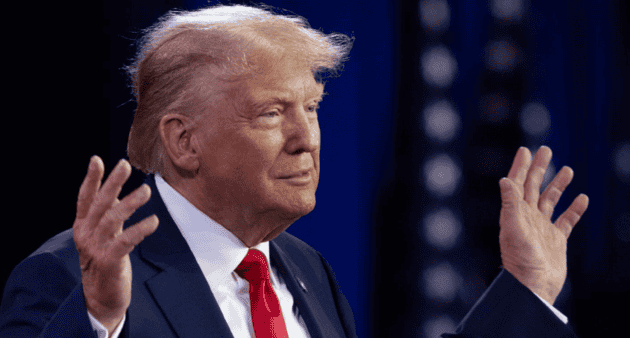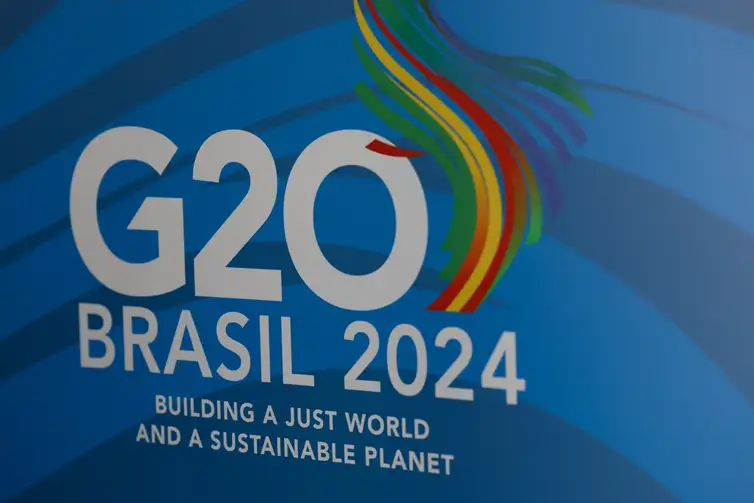Trump Edges Ahead in Swing State Poll Showdown
As the United States braces for another presidential election battle, polls reveal a shift toward Donald Trump in critical swing states, with Joe Biden's campaign facing challenges.
Published May 14, 2024 - 00:05am

Image recovered from informador.mx
New polling data from The New York Times, Siena College, and The Philadelphia Inquirer has ignited discussions regarding the upcoming presidential election. Former President Donald Trump appears to be leading current President Joe Biden among likely voters in several swing states, revealing potential challenges for the Biden campaign.
In key Sun Belt states such as Nevada, Georgia, and Arizona, Trump has established considerable leads according to the surveys. His advantage stretches up to 13 points in Nevada, 9 points in Georgia, and 6 points in Arizona. However, the situation is more nuanced in the Great Lake battlegrounds of Pennsylvania, Wisconsin, and Michigan. Trump's leads in Pennsylvania and Wisconsin are within a one-point margin, while Biden edges out by one point in Michigan—a difference that falls within the polls' margin of error.
These polling results have been understood as alarming for the Biden campaign, particularly in the Sun Belt region. Meanwhile, the data suggests that the Biden team has potential grounds for strategy in the Great Lake states. Increasing diversity within the 'Trump coalition' is cited as a factor, with Trump gaining traction on issues such as inflation, jobs, and border security, which may appeal to a broader electorate.
The complexity of voter dynamics is underlined by the varied support base for Trump, with non-white voter percentages increasing compared to previous years. These changes have shifted the electoral map temporarily, with the potential to impact the outcome of the elections significantly.
This shift is against a backdrop of widespread dissatisfaction with the current state of the nation and doubts about Biden's capacity to enact significant improvements in American life. Furthermore, Trump's support among young and non-white voters has challenged the typical electoral assumptions, bringing a new variable into the political equation.
The polling indications are critical for both the Republican and Democratic parties as they prepare for the upcoming elections. These swing states have traditionally been crucial in deciding the presidential race and likely will be again. As the Republican Party capitalizes on the economic challenges faced by the Biden administration, Democrats are focusing on retaining voters through a message of resilience and change.
Strategists on both sides must now navigate this complex landscape, as voters in these pivotal states weigh the realities of the economy, foreign policy, and civil rights in their decision-making process. As the elections draw nearer, all eyes will remain on these key regions, which may very well decide the nation's political direction for years to come.
The latest polling outcomes reveal an evolving political landscape in the United States. The surveys suggest that former President Donald Trump's support may be solidifying in states that were once considered battlegrounds, raising the stakes for the Democratic Party. The electoral implications of these shifts are profound, as they could indicate a reshaping of the American political map in favor of the Republicans, who have seized upon the economic woes and policy dissatisfaction that have marred the Biden administration.
Analysts suggest that the reported gains by Trump among young and non-white voters point to a re-evaluation of party loyalties and political priorities. These demographic segments were previously solid backers of the Democratic Party, and their potential pivot may reflect a broader national trend. Issues such as employment opportunities, law enforcement, and immigration policy are among the areas where Trump is perceived as having gained an edge over President Biden.
Insights from the poll also indicate that President Biden's administration's handling of crises—from the ongoing COVID-19 pandemic to the tumultuous withdrawal from Afghanistan—may be contributing to voters' concerns. Though not directly linked to the current economic challenges, these events may have eroded some voters' trust in the administration's ability to handle complex issues. Moreover, discussions around healthcare, climate change, and education have emerged as potential dividing lines, influencing the electorate's sentiment and priorities.
President Biden's legislative successes, including the passage of the infrastructure bill and efforts to expand access to healthcare, have not resonated as strongly with voters worried about immediate economic and social issues. In contrast, Trump's messaging—focusing on quick fixes and a return to previous policies—appears to have struck a chord. His campaign seems to have effectively tapped into a vein of discontent over rising inflation and perceived stagnation, factors which are swaying voter sentiment in his favor.
While the Republican Party appears energized by these polling numbers, the Democratic Party is attempting to counteract this momentum by emphasizing their plans to combat inflation and kickstart the economy. The Biden team is also playing up efforts to protect voter rights and democracy, which remain resonant topics among their base and moderate voters alike.
Both political parties are keenly aware that independent voters, who often hold the balance of power in swing states, could be the ultimate deciders in the forthcoming elections. These individuals, who may not have a strong allegiance to either party, are looking at their own economic circumstances and the overall direction of the country as they make their electoral choices. With this in mind, both parties are fine-tuning their platforms and outreach strategies in order to galvanize these crucial voters.
As campaign trails heat up and political ads saturate the media, it becomes clear that the American public is facing a critical choice. This choice will not only resonate within the borders of the United States but will also have major consequences for international relations, global markets, and the international order. The outcome of these swing state votes is not only a barometer of the national mood but a determinant of the future trajectory of the United States on the world stage.







